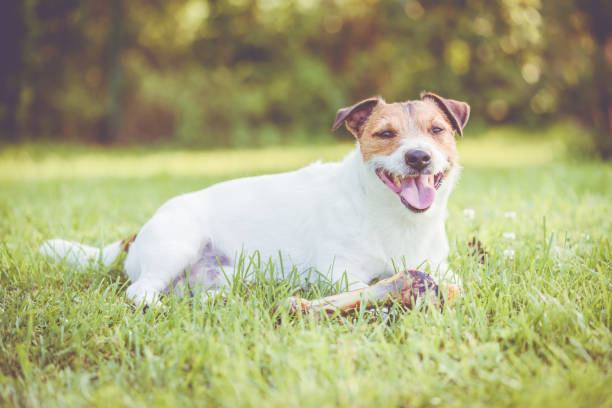The daffodil plant poses a threat to dogs. Be vigilant while enjoying the outdoors with your dog, ensuring they do not ingest any portion of this flower or its foliage. These sections of the plant are laden with a toxic compound called lycorine, which could lead to grave gastrointestinal problems in your canine.
Dogs cannot digest this toxin, and it will make them sick within hours of eating daffodils. The first sign that there’s something wrong is often vomiting, but they could also have diarrhoea, drooling excessively, appearing depressed or lethargic, having trouble breathing, or even seizures! This is an emergency, so call your vet right away if you suspect that your dog has eaten daffodils. If not treated promptly, there’s a good chance they’ll die from their exposure to the toxin in the daffodils.


- If you’ve got a dog, don’t plant daffodils anymore. If they’re already in your yard, keep them well away from where you allow your dogs to play, and make sure that your dog never has access to any part of the plants when you are not around. If your dog digs in your garden, plant daffodils in raised beds to prevent them from digging.
- If you can’t get rid of all the daffodils, consider getting one of the breeds that are not sensitive to this toxin, like Golden Retrievers or Labradors. While it’s always better to keep any dog breed away from daffodils, these breeds should be fine.
- If you’ve already got a sensitive dog breed, don’t plant Daffodil bulbs in your yard. It’s not worth the risk! Call your local garden centre if you have any questions about whether it’s safe to plant them or want help getting rid of daffodils that are already in your yard. They can help you get rid of daffodils and get some new plants that will poison your dog.
- Roses are an excellent alternative to Daffodils for people who don’t want to put their dogs at risk from these beautiful but poisonous flowers.
- Lastly, please keep your dog well fed and watered when you take them outside to play. This will reduce their temptation to eat anything other than the toys or treats you’ve given them. If they are hungry or thirsty, they might be more tempted to go after something like daffodils than if they had just eaten a full meal.


What are the types of poisonous flowers?
Some of the types of poisonous flowers are lily-of-the-valley, oleander, mountain laurel, rhododendron, and violet leaf anemone. These flowers are toxic to either humans or animals.
How do I know if my dog has eaten a poisonous plant?
Signs of a poisonous plant include vomiting, diarrhoea, drooling, lethargy, and difficulty breathing. If you suspect that your dog has eaten a poison plant, contact the vet as soon as possible!
If your dog has eaten poisonous plants, you need to know what kind of treatment they’ll need. The first thing to do is take the dog’s temperature. If it’s over 104 degrees Fahrenheit, it needs to be taken to the vet clinic immediately. Use a damp cloth or towel to wipe the dog’s mouth and muzzle to remove any toxins behind their tongue and inside their mouth. Give the dog some water if they don’t vomit right away.
You can also give your dog activated charcoal, which will help prevent any poison from being absorbed by their system. You can find this at your local pet store or veterinarian’s office. It should be given to your pup about an hour after they’ve eaten a poisonous plant. Do not induce vomiting unless the dog is conscious, and you know for sure that they’ve eaten a toxic plant or chemical because it may hurt them instead of helping them.


Conclusion
Daffodils are poisonous to dogs! If you have a dog, make sure they never come in contact with your daffodils. You can also consider getting one of the breeds that aren’t sensitive to this toxin if you’re worried about it. Roses are another flower safe for humans and animals alike without any risk of toxicity or poisoning. Lastly, keep your pet well-fed and watered when taking them outside – that will decrease their temptation to eat something like daffodils instead of playing with toys or treats given by owners.
This article discusses how to treat their symptoms if they happen to ingest some daffodil plants and what you need to know beforehand, so it doesn’t happen again! It’s essential not only for yourself but also for your pets who enjoy spending time with you outside too.


